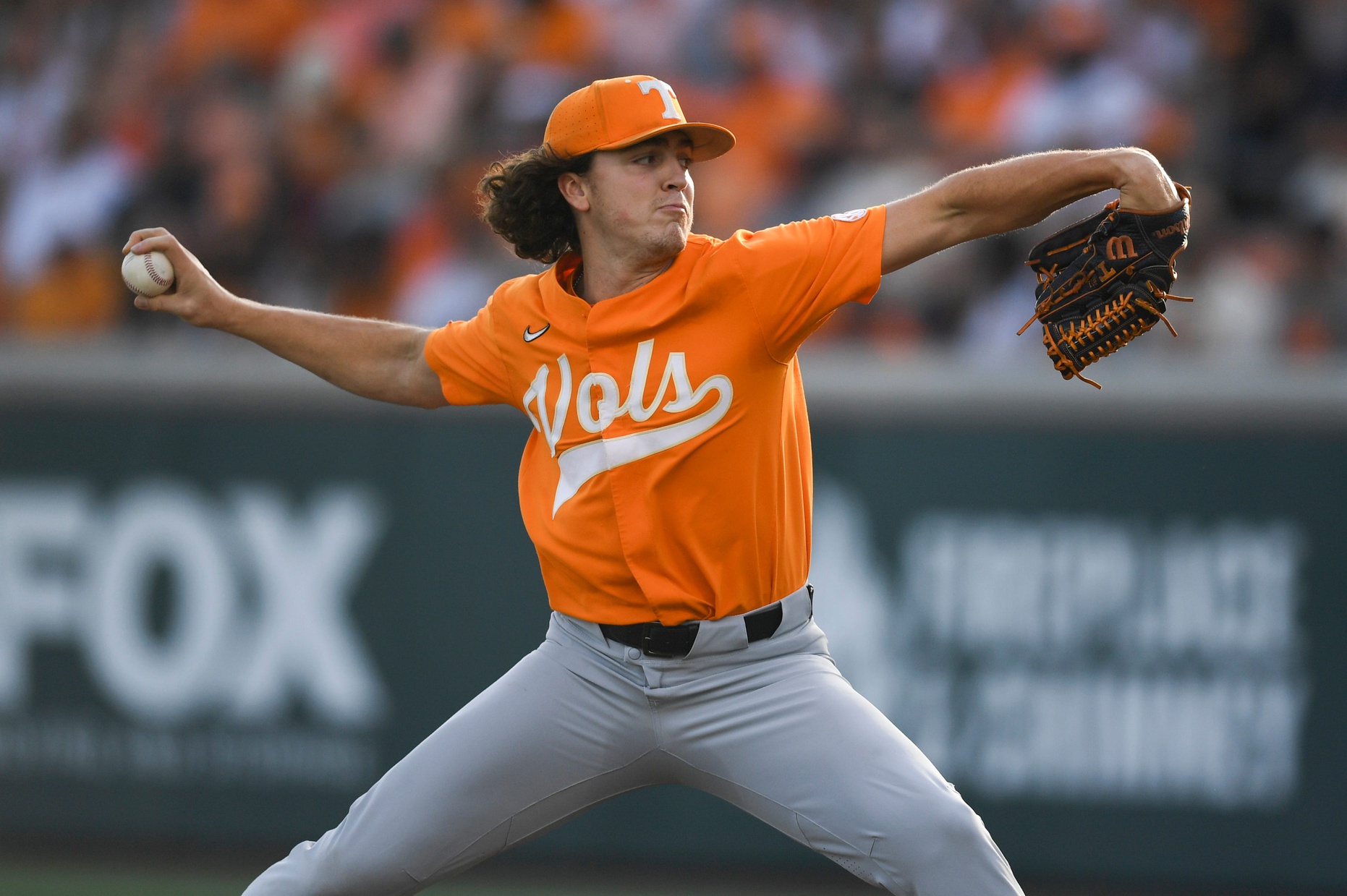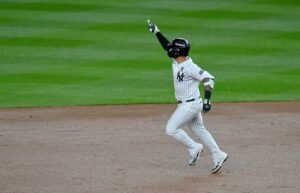Chase Dollander went from a recruited prep pitcher to the best pitcher in college baseball and a potential top-five pick in the 2023 MLB Draft. He’s a fascinating arm to watch with lots to like. Last season, he transferred into the Tennesee Volunteers program and played a significant role in their historic season. However, teams can’t figure out what to think of his inconsistent spring. He lasted five innings in just one of his five starts; he hasn’t been as sharp as last season but still has true potential. There’s time for Dollander to pitch his way back into the top pick discussion, considering there’s few college arms worthy of first-round potential.
Chase Dollander Draft Profile
Scouting grades: Fastball: 70 | Curveball: 50 | Slider: 60 | Changeup: 55 | Control: 55 | Overall: 60
Strengths
Dollander’s arsenal starts with a 95-97 mph fastball that peaks at 100. It produces an elite swing-and-miss rate with its mix of velocity and carry. Every fastball Dollander locates in the upper half of the strike zone results in one of two things: a whiff or weak contact. When it’s located in the bottom half of the strike zone, it results in more brutal contact but fewer whiffs.
His slider is his best secondary pitch that, reaches in the mid-80s and reaches 91 mph. It’s an above-average pitch that has hard and late movement. It generates whiffs and weak contact with Dollander using the pitch to right-handed hitters. He even has a mid-70s curveball and an upper-80s changeup. Both are solid pitches for Dollander but aren’t as consistent as his primary ones, and they’re mainly used against left-handed hitters.
Weaknesses
Dollander is capable of displaying frontline stater stuff. However, he’s not locating it as well. He ranked seventh in NCAA DI with an 8.3 K/BB ratio as a sophomore while easily repeating his simple delivery. His control and command have been more average this spring. His athleticism helps generate his premium pitches with little effort, and he still has room to add more strength to his 6’2″ frame.
When a pitcher is not locating his stuff well, it’s usually from facing the batting lineup for a third time. He could start using his curveball more. In 2022, he used the pitch just 7% of his starts, upping the percentage against left-handed hitters. He could utilize it as a chase pitch in the future, as he relies on his top two pitches for whiffs.
MLB Player Comparison
Jacob deGrom vs. Chase Dollander pic.twitter.com/ubB6qn4kfs
— Rob Friedman (@PitchingNinja) February 20, 2022
Some evaluators compare the way Dollander pitches to Jacob deGrom. Both have a compact wind-up and a solid release. Plus, the similarity in mechanics is intriguing. They demonstrate plus velocity with their fastball and slider. deGrom’s slider averages at 92.7 mph as it’s among the best pitches in baseball. Dollander’s sits at 85-89 mph; he should be able to add another 2-3 mph of velocity to that pitch. Not to say that they have a similar career path, but the pitchers have similarities.
Photo Credit: © Caitie McMekin/News Sentinel / USA TODAY NETWORK
Players mentioned: Chase Dollander, Jacob deGrom






